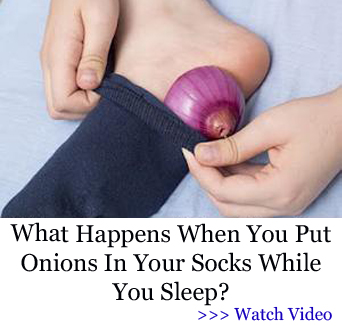The G-spot, or Gräfenberg spot, named after German gynecologist Ernst Gräfenberg, is as you probably know, a purported erogenous zone located within the vagina. The concept first gained attention in the 1950s, when Gräfenberg described that an area within the vagina was capable of producing intense sexual arousal, powerful orgasms, and even female ejaculation. Since then, as far as female G-spot is concerned, various researchers propose that;
- The G-spot is an extension of the clitoris, which has extensive internal structures. What's perceived as G-spot stimulation may actually be indirect clitoral stimulation.
- The presence of a dense network of nerve endings, glands, and erectile tissue in the anterior vaginal wall, which could explain the heightened sensitivity.
- The internal structures of women have increased tissue density. Therefore it all depends on individual differences in sexual anatomy and response.
- The G-spot may not be a distinct anatomical entity but rather a complex interplay of physical and psychological factors that vary from person to person.
The Male G-Spot: A Topic of Scientific Debate
The concept of the male G-spot primarily refers to the prostate gland, which is to capable of producing intense sexual pleasure, we believe. I
t's also been a subject of scientific interest, sparking debates similar to the female G-spot. The prostate is located just below the bladder and can be stimulated through the rectum, which some men report as leading to powerful orgasms.
Anatomical Basis
The prostate gland is part of the male reproductive system where seminal fluid is produced. It's about the size of a walnut and surrounds the urethra. Prostate stimulation, often referred to as "prostate massage," involves applying pressure to this gland, which some men find pleasurable.
Prostate stimulation can be achieved either;
- Externally, through the perineum (the area between the scrotum and the anus), or
- Internally, through the rectum.
When stimulated, the prostate can cause a sensation different from penile stimulation, often described as deeper and more encompassing.
Scientific Findings
Research into prostate stimulation has yielded mixed results; Various studies suggest that;
- Prostate stimulation can enhance sexual pleasure and lead to strong orgasms, sometimes with the production of a fluid that is not semen, often referred to as "prostate fluid (pre-cum)".
- Prostate stimulation could lead to intense orgasms for some men, sometimes described as "full-body" orgasms. This suggests that the prostate may indeed serve as an erogenous zone, contributing to sexual pleasure.
- Not all men experience pleasure from prostate stimulation, and the responses can vary significantly. Some men may find it uncomfortable or even painful.
Psychological Perspectives
As with the female G-spot, the psychological aspect of prostate stimulation cannot be overlooked. Men's attitudes towards their bodies, sexual preferences, and cultural perceptions of masculinity can all influence their experiences. Some men would feel uncomfortable to explore themselves that way due to societal stigmas surrounding anal play and male sexuality.
Personal experiences shared in forums, books, and articles highlight the variability in how different men enjoy prostate stimulation. The reports - anecdotal evidence - are quite subjective.
Medical Implications
Prostate stimulation is not only discussed in terms of sexual pleasure but also for its potential health benefits.
Reducing the Risk of Prostatitis
Prostatitis, or inflammation of the prostate gland, causes discomfort and urinary problems. Regular prostate massage is believed to help prevent or alleviate the symptoms of prostatitis.
By stimulating the prostate, you can improve blood flow and facilitate the drainage of prostatic fluid, that could reduce inflammation and preventing the buildup of secretions that could lead to infection.
Improved Urinary Function
The prostate surrounds the urethra, and inflammation or enlargement of the prostate can lead to urinary problems such as difficulty starting urination, weak urine flow, and frequent urination. Regular prostate massage potentially reduces inflammation and helps relief from these urinary symptoms.
Enhanced Sexual Health
Some men report increased libido and improved erectile function as a result of regular prostate massage. The enhanced blood flow and nerve stimulation associated with prostate massage may contribute to these effects, potentially improving overall sexual satisfaction.
Potential for Decreasing the Risk of Prostate Cancer
This claim is highly controversial and not well-supported by scientific evidence.
There is some speculation that regular prostate massage could help in reducing the risk of prostate cancer by promoting the drainage of fluids that might otherwise accumulate and cause issues.
Alleviating Benign Prostatic Hyperplasia (BPH) Symptoms
Benign Prostatic Hyperplasia (BPH) is a condition where the prostate gland enlarges, often leading to urinary problems.
Prostate massage can help alleviate the symptoms of BPH by improving the flow of prostatic fluid and reducing the pressure on the urethra. This, in turn, might help in relieving urinary symptoms associated with BPH.
Psychological and Emotional Benefits
Prostate massage can also have psychological and emotional benefits - greater body awareness and a sense of sexual liberation. It can help reduce anxiety related to sexual performance and improve overall confidence.
The release of endorphins during pleasurable prostate stimulation can also contribute to improved mood and stress relief.
Risks and Precautions
With all that said, improper techniques can cause injuries or infections, so here are some precautions to consider:
- Hygiene: Always ensure that any instruments used for prostate massage are clean and properly sanitized to prevent infections.
- Lubrication: Use plenty of lubricant to reduce friction and minimize the risk of injury.
- Gentle Techniques: Start with gentle pressure and gradually increase as comfortable. Avoid excessive force, which can cause damage.
- Medical Consultation: If you have any underlying health conditions or concerns, it’s advisable to consult a healthcare provider before engaging in prostate massage.
Critics/Skepticism
Skeptics of the male G-spot concept argue that the lack of consistent anatomical evidence suggests it may be more myth than reality. They point out that many studies rely heavily on self-reported data, which can be influenced by cultural and personal beliefs about sexuality.
They also argue that the prostate's role in sexual pleasure may be overstated. They point out that the enjoyment of prostate stimulation is highly subjective and not universally experienced by all men. The scientific evidence also supports that prostate stimulation as a distinct source of orgasm is less robust compared to penile stimulation.
The Broader Implications
The variability in experiences and the subjective nature of sexual pleasure make it a complex area of study. But despite all the debates, the discussion around the male G-spot has contributed positively to conversations about male sexuality.
It has indeed encouraged men to explore their bodies and challenge traditional notions of masculinity and sexual pleasure. This exploration has led to a more open dialogue about male sexual health and the diversity of sexual experiences.






